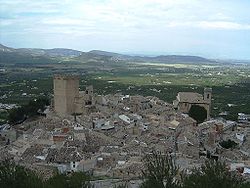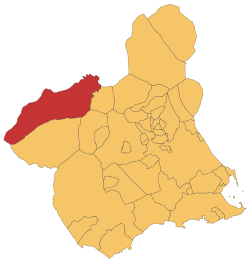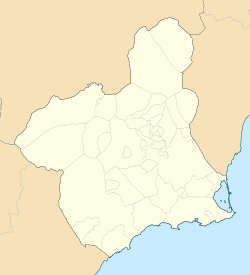
Murcia is a city in south-eastern Spain, the capital and most populous city of the autonomous community of the Region of Murcia, and the seventh largest city in the country. It had a population of 460,349 inhabitants in 2021. The total population of the metropolitan area was 672,773 in 2020, covering an urban area of 1,230.9 km2. It is located on the Segura River, in the southeast of the Iberian Peninsula. It has a climate with hot summers, mild winters, and relatively low precipitation.

Bullas is a municipality and town in the Region of Murcia, southeast Spain, located 53 km from the provincial capital, Murcia. it is the highest municipality in the Region of Murcia after Moratalla.

Calasparra is a municipality in the autonomous community of Murcia, Spain. It shares borders with Cieza, Mula, Cehegín, Moratalla and province of Albacete.

Abanilla is a Spanish municipality located in the Comarca Oriental in the Autonomous Community of Murcia. It lies close to the border of the province of Alicante in the Autonomous Community of Valencia.
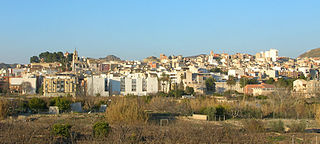
Abarán is a Spanish municipality located in the province of Murcia. It is situated in the Valley of Ricote on the banks of the River Segura 40 km from the city of Murcia. It belongs to the parish of Santiago. It has a population of 12,917. Abarán belongs to the comarca of Vega Alta del Segura, the capital of which is Cieza. Abarán and Cieza share a healthy rivalry.

La Unión is situated in the Region of Murcia in the southeast of Spain. It has an area of 24.6 km², and had a population of 19,907 on 1 January 2018. It has an elevation of 86 m. Its average annual temperature is 17 °C. It has balmy winters. The sun shines 320 days per year. La Unión is situated in one of the sunniest areas in Europe; this kind of climate makes possible the many leisure activities, popular fiestas, sports, and cultural activities that are held in the town. The town is linked by a regular train to Cartagena which allows views of the past industrial heritage of the area and the more modern occupations of agriculture and tourism. La Unión lies within the built-up area of Cartagena and is surrounded on all landward sides by the City of Cartagena.
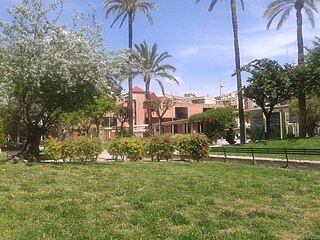
Molina de Segura is a municipality of Spain in the autonomous community and province of Murcia. It is located 10 km from the provincial capital, Murcia.

Las Torres de Cotillas is a Spanish municipality in the autonomous community of Murcia and is located in the eastern half.

Alhama de Murcia is a Spanish municipality in the autonomous community of the Region of Murcia. It is located in the north of the southern half of the region. The municipality shares borders with Librilla in its north, Murcia in its northeast, Fuente Álamo de Murcia in its east, Mazarrón in its south, Totana in its west and Mula in its northwest.
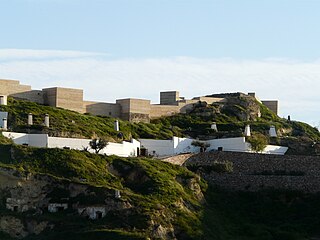
Puerto Lumbreras is a Spanish municipality in the autonomous community of Murcia. It has a population of 15,780 (2020) and an area of 139 km2. It is located in the southwestern end of Region of Murcia and is adjacent to Andalusia.

Ricote is a Spanish municipality in the autonomous community of Murcia. It has a population of 1,509 (2004) and an area of 87.7 km2.
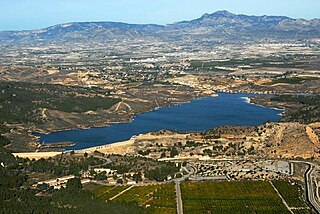
Santomera is a Spanish municipality in the autonomous community of Murcia. It has a population of 16,105 (2018) and an area of 44.2 km2. It shares borders with Fortuna in the north, with Murcia in its west and south and with the province of Alicante in the east.

The Region of Murcia is an autonomous community of Spain located in the southeastern part of the Iberian Peninsula, on the Mediterranean coast. The region is 11,313 km2 (4,368 sq mi) in area and had a population of 1,511,251 as at the start of 2020. About a third of its population lives in the capital, Murcia, and a seventh in the second city, Cartagena. At 2,014 m (6,608 ft), the region's highest point is Los Obispos Peak in the Massif of Revolcadores.

Aledo is a municipality in the Region of Murcia, southern Spain.
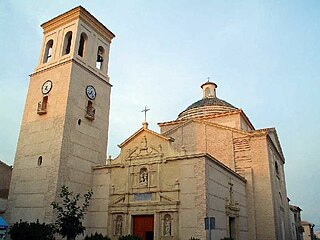
Alguazas is a municipality of Spain in the autonomous community and province of Murcia and it is located in the south-west of the northeastern quarter.
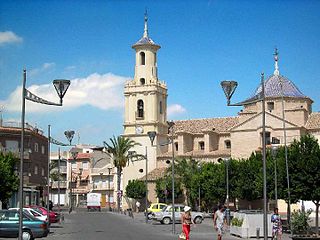
Fortuna is a town and a municipality in the autonomous Region of Murcia in southeastern Spain. It is located in the northeast of the region and in Comarca Oriental. The municipality shares borders with Abanilla at its east, Jumilla and Abarán at is north, Blanca at its northwest, Molina at its west and southwest and Murcia and Santomera at its south.

Campos del Río is a municipality in the autonomous region of Murcia in southeastern Spain. It covers an area of 47.3 km2 and shares borders with Ojós at its north, Villanueva del Río Segura and Alguazas at its north-east, Las Torres de Cotillas at its east, Murcia at its south-east, Mula and Albudeite at its south and west and Ricote at its north-west.
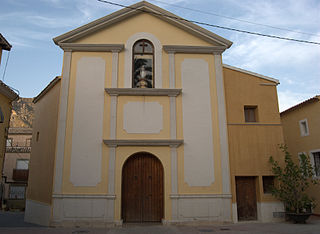
Ojós is a municipality in the autonomous community of Murcia in southeastern Spain. It is located in the south-west of the north-eastern quarter of the region and has an area of 45.3 km 2 and shares borders with Blanca at its north, Ulea at its north-east, Villanueva del Río Segura at its East, Campos del Río at is south-west and Ricote at its north-west. The municipality was inhabited by 500 people in 2019.

Algezares is a village and a district in Murcia, Spain. It is part of the municipality of Murcia and is almost located in the centre. It has an area of 24.74 km2, and had a population of 5,620 in 2020.

Raspay is a village in the municipality of Yecla, eastern Spain. Its population consisted of 100 inhabitants in the year 2017.
